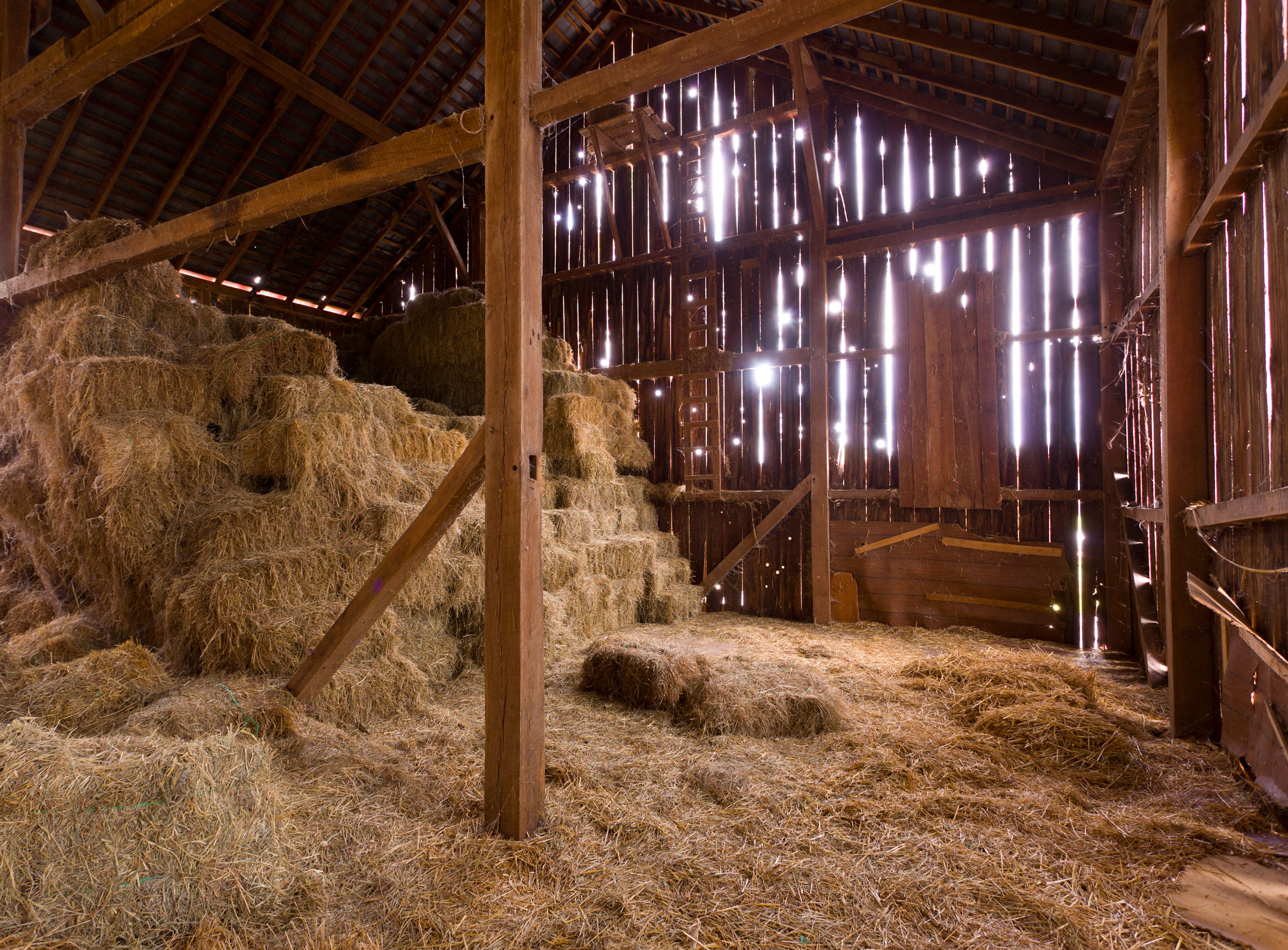
Finding a reliable source for good-quality horse hay is only part of the equation. Safely storing it so that it stays fresh, doesn’t start a fire, and isn’t a hazard to humans or horses in the barn is key.
Storing hay tip 1: Clean your hay area and check for structural issues
Start by cleaning the hay storage area. Sweep loose hay out of lofts and remove non-edible hay from ground-level storage areas. Next, inspect the storage structure. If hay is stored in a loft, check the integrity of the floor and repair any weak spots. Look for any holes in the roof where water might leak in and damage your investment.
Storing hay tip 2: Limit contact with ground moisture
When stacking hay on the ground, an impervious surface such as concrete is ideal because it limits ground moisture from seeping into the hay. Concrete blocks or pallets can be used to create a dry surface for hay to be stacked on. Blocks are inexpensive and readily available at most hardware or home improvement stores. Pallets are often free from hardware or lumber stores or maybe even the local feed store.
“When storing hay right out of the field, stack the bales loosely with the cut end up,” said Erin Zaorski, who owns Bright Star Farm in Layton, New Jersey. “That allows any extra moisture to dissipate. If you pack moist hay too tightly together, it can start a fire.”
Storing hay tip 3: Create shorter hay stacks
Barns are often limited in space, making it necessary to stack the hay as high as possible. However, if you have the extra room, Zaorski recommends creating shorter stacks rather than those that reach the ceiling. Bales stacked 10 rows high can easily topple onto a person below, creating a risk of injury and increasing the chances of bales breaking when they hit the ground.
“I’ve had my fair share of bales fall on my head,” she said.
You can buy the best hay on the market, but if it isn’t stored properly, you’ll sacrifice nutritional content and run the risk of being unable to feed it due to mold, dust, or unpalatable hay.


